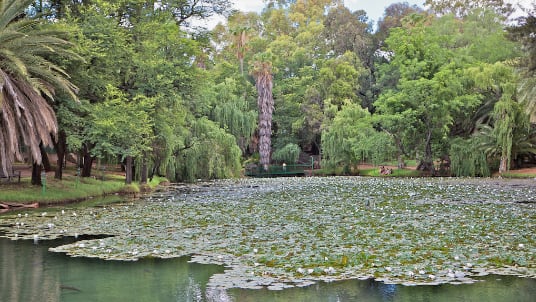The sundrenched Kalahari, with its ancient, undulating landscape and endless horizons, evokes memories of a land before time. Its shimmering spaces spread out beneath an unrelenting, hot and metallic sky, it seduces the visitor and those living in its towns and villages with a disarming lack of pretension hiding an embarrassing wealth of natural and mineral riches.
Beneath the Kalahari's great blanket of red sands, hides a treasure trove of iron, manganese and other precious ores. Although the mechanised giants of the open-cast mining industry have gouged gaping wounds in the desert floor, they have only dented the surface of its enormous wealth.
Today, the Kalahari is home to 40 raptor and vulture species (of 67 species in South Africa) and seven owl species (of 12 species nationally). The red sands also support a vast selection of game farms which are plentiful with wildlife and hardy unusual plants. And, each day, in a display of superabundance, millions of litres of crystalline, mineral rich water pours into this arid landscape.
Flowing from an amazing dolomite spring as strongly and as steadily as if the rock had been struck by Moses, the beautiful Eye of Kuruman feeds forests of majestically tall camelthorn trees silhouetted against the seamless horizon of the great, mystical and miraculous Kalahari desert.
The evocative Northern Cape's Kalahari Desert evokes a picture of never ending red sand dunes, big, blue skies and undulating heat waves that descend unrelentingly on dry river beds.
Despite this immaculate wilderness, the Kalahari is not true desert, in the sense of being unable to support life. Parts of the Kalahari receive as much as 250 millimetres of rainfall, albeit erratically, throughout the year, and grasses and acacias easily support large species of antelope, hyenas, the famous black-maned lions of the desert, giraffe, warthogs, jackals and possibly the most endearing and iconic creature of the southern African deserts, the cheeky meerkat.
North and east, approximately where the dry forests, savannahs and salt lakes prevail, the climate is sub-humid rather than semi-arid. South and west, where the vegetation is predominantly xeric savannah or even a semi-desert, the climate is "Kalaharian" semi-arid.
The Kalaharian climate is subtropical (average annual temperature greater than or equal to 18 °C, with mean monthly temperature of the coldest month strictly below 18 °C), and is semi-arid with the dry season during the "cold" season, the coldest six months of the year.
